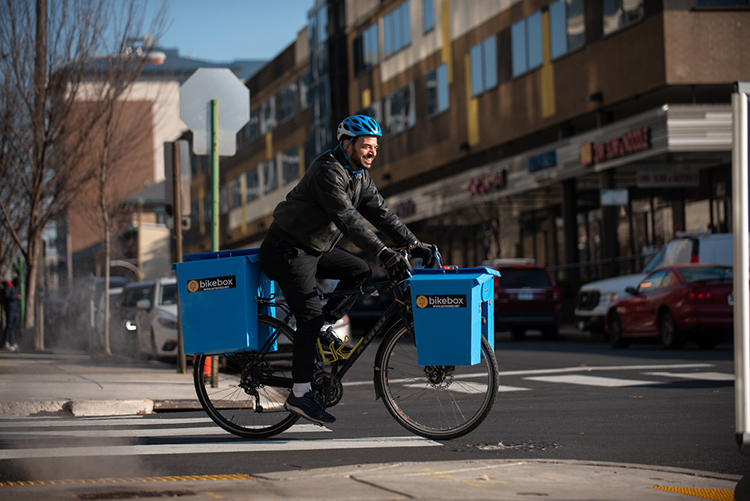Winter cycling isn’t as popular, or comfortable, as in other seasons. Snow in the bike lane, ice on your brakes and icicles in your hair—it’s all going to happen if you ride in the winter.
But as an urban adventurer determined to ride all year, I’ve gathered tips to make my winters less terrible, because even at its worst, commuting by bike is always rewarding.
Clothes and Visibility
You’re going to need to do more than wear layers. It may look funny to be covered head-to-toe in lycra, but it’s very warm. Many cyclists I speak to recommend a long-sleeve, windproof, waterproof cycling jacket and insulated pants (though the warmth of the jacket is much more important than the pants.) Long, heavy socks and a balaclava that fits under your helmet are also recommended.
“Remember that everybody’s bundled up, drivers may have fogged windows, so keep an extra sharp watch to make sure others actually see you,” says Mike McGettigan, owner of Trophy Bikes in Northern Liberties. “Make sure all your lights are fully charged, or with fresh batteries, as cold weather hurts their efficiency. Run them even in the daytime to help you get seen through dirty auto windows.”
Extremities
If you don’t have the right gloves and the right socks, your fingers and toes will suffer. Bike courier Amy Cherowitz wears cut mitten-gloves (gloves with the fingers cut out and a convertible mitten-like flap over your fingers), but notes that not all of these gloves have a convertible cover for your thumb—so choose your gloves accordingly.
Cherowitz is also an enthusiast of toe warmers, which are packets of iron, vermiculite, water and other natural ingredients that heat up when exposed to air. “I love the cold. But at some point my feet start to hurt from the cold. Self-activating toe warmers are amazing,” says Cherowitz.
Strategy
When the ground is icy and snowy, you don’t always have the ability to stop quickly.
National cycling advocacy organization People For Bikes offers this advice on their website: “Take turns wider on sloppy road conditions, and watch out for places where the weight of cars has packed snow down into irregular ice lumps. Ride on clear pavement when you can, and don’t be afraid to take the lane if the street is too narrow due to snow banks for safe passing.”
Leave early, ride slow and, if possible, avoid the bike lanes. The city’s plows usually push snow from the streets into the bike lane, and riding in those piles of snow and ice is more dangerous than taking the lane and riding in the streets. “Day one of a storm can be beautiful, with few or no cars. But in days 2 to 5, beware of narrowed paths in the snow, and the polished stretches where cars have been sliding up to the stop sign,” adds McGettigan.
I’ll be riding all winter and tweeting about it when there’s something worthy to share. Follow me @RandyLoBasso, and tweet at me for additional tips.






